Here is a blog-friendly version of remarks I prepared for delivery to the AANE Conference in Boston.
I have tried to reflect some of the (less stilted, I hope) actual delivery, but not including some of the shoutouts I did to individual people who were in attendance.
I have also added links to resources concerning some of the topics I referenced. For the most part, I have bolded the places where I have provided links to articles or blog posts that are relevant to the topic I mention. I did not provide a full list of resources at the end, so you’ll have to poke around if you want to see some of my source material. This was, after all, a talk that was meant to share my experiences, and not an academic presentation. Still, I’ve tried to provide further reading for people who might be interested in particular topics that I touch upon along the way.
There was a lively Q+A session after I finished speaking, with many people providing feedback, sharing their own experiences, or asking questions. Many of those participating were, like me, autistic/Aspergerian. Questions and comments ranged from education to medication and many other topics. I was pleased that the general tenor of the conversation made me realize I had stuck a chord with many of those in attendance. We ran out of time before we ran out of conversation.
I welcome further feedback or questions via email or comments on this blog.
Michael Forbes Wilcox
mfw@mfw.us
http://www.mfw.us/blog/
Growing Old Disgracefully
Two roads diverged in a yellow wood,
And sorry I could not travel both
And be one traveler, long I stood
And looked down one as far as I could
To where it bent in the undergrowth;
Then took the other, as just as fair,
And having perhaps the better claim,
Because it was grassy and wanted wear;
Though as for that the passing there
Had worn them really about the same,
And both that morning equally lay
In leaves no step had trodden black.
Oh, I kept the first for another day!
Yet knowing how way leads on to way,
I doubted if I should ever come back.
I shall be telling this with a sigh
Somewhere ages and ages hence:
Two roads diverged in a wood, and I—
I took the one less traveled by,
And that has made all the difference.
All my life I have traveled a different road. Sometimes, that was my choice; it was my preference, it was my comfort and my joy. But other times, it was not a choice at all. I was born different, and I had to travel as best I could, through a world that expected me to be somewhere else, to go the way that others did. But I did not know how.
Many of you know me, and have heard me talk before. I have shared how I learned, fairly late in life, that I am autistic. Nearly ten years ago, I embraced the Asperger’s label, somewhat reluctantly at first, and then with great enthusiasm. In the intervening years, I have learned much about autism and Asperger’s, and I am proud of both labels, which I use pretty much interchangeably.
I will talk to you today about what it has been like for me to grow old differently. Growing old is a wonderful thing. As they say, it sure beats the alternative.
I’d like to start with a funny story or two. At least, funny to me. Many years ago, before I knew anything about autism, I had a romantic partner. Not my first, not my latest. We lived together in the house where I still live. We parted company before I came to know that I’m autistic. But she knew that I was odd. That was part of my charm, I’m sure. In the years since then, we have remained friends, and we have laughed a lot about some of the things that transpired when we were together. We have talked about what it now means to me to be Aspergerian, and she has come to realize that during her life, she has tended to be attracted to Asperger’s men. We do have endearing qualities, you know.
So, a couple of stories that involve Joan.
You might think that the title of my talk was inspired by some meme I saw on the internet, like this one. It wasn’t, but I endorse the sentiment!
No, it was something more personal.
In the years we were together, Joan and I went on some interesting vacations, and I guess she noticed my penchant for acquiring souvenir t-shirts. So, when she started going on vacations without me, she began to honor that tradition by always bringing me back a t-shirt from her various trips.
Except that they weren’t necessarily souvenirs of any particular place, but more likely oddball commentaries or things that made her think of me. Another of the things that she and I can now joke about is that she used to call me a grumpy old man, even though I am younger than she. And the truth is, I probably was; it’s one of the things about me that has changed, I think, because of my understanding of my autism and my understanding that most of the people in the world are not mean or crazy; they just used to seem so to me because I didn’t understand how very different I am.
Here is a t-shirt on the grumpy theme that she brought me from Sun Valley:
And, it may very well be that she recognized and understood long before I did that my grouchiness and my aloofness, among my other endearing qualities, perhaps signified that I was a very different kind of person.
You get the idea; there were many others. But one of my favorites was the one she brought back from a visit to her friend Lisa in Key West. It’s a t-shirt that, according to the front of the shirt, is from the Schooner Wharf Bar at the Key West Seaport. On the back, it says
I’ll give you another example of the things we now laugh about, because I think it helps illustrate something that I want to talk more about later; sensory issues in autism.
On cold winter nights, we would often sit on the couch that faced the fireplace and read our own books and magazines as the fire blazed. On some occasions, I felt a need to withdraw into my own personal space, so I would take my hand and draw an imaginary line in the middle of the couch. “Don’t cross this line!” I would warn her. Years later, after we discussed my times of not wanting to be touched, she told me, “I thought you were kidding, but you weren’t, were you?!” No, I wasn’t.
Before I came to understand that my autism explains many, if not most, of my sensory issues, I thought that I was defective in some way, because who would not want to be touched or to be hugged, who could possibly be bothered by currents of fresh air, who would cringe if someone chewed their ice, or spoke with food in their mouth, or ripped up a piece of paper, or if a clerk would fold a receipt before handing it to me? What was wrong with me that all of these things made me want to be somewhere else? And why did I have extreme, or even contrary reactions to some medications?
Now I understand, and that understanding has helped me to accept myself for who I am. I now know that I am not, in fact, defective, but that these reactions are a natural part of me and many people like me. Meeting a lot of other autistic people has helped immensely. I’ve learned that, although I may be unusual, I’m not so much of an oddball as I once thought I was.
Over the course of the past few years, I have met hundreds of autistic people, most of them in person, but also many of them online. The online world has a very different set of social rules, and it also allows for timeshifting, meaning that interactions don’t have to take place on any particular schedule, but are at the convenience of the participants. All of this can make online interactions much more comfortable for autistic people – and for others, too, I’m sure.
Mostly, I have met autistic people in realtime, and have learned a lot about autism, and therefore myself, from participating in support groups, and of course from attending lectures and AANE conferences like this one.
I have also been privileged to work with couples. At AANE, I have co-facilitated many series of support groups for what I call neuroexceptional couples, meaning that one partner identifies as not being neurotypical (or sometimes both do). In the course of that work, I have met dozens of couples of all manner of intriguing backgrounds, interests, and challenges.
I’ve also talked with and helped many parents of autistic kids, and I’ve given talks to autistic adolescents. I’ve taught college classes and I’ve served on many Boards and Advisory Committees. I’ve read, I’ve seen movies, I’ve been an adviser for a play – a romantic comedy in which one of the characters is an Asperger’s professor. I have even started my own tongue-in-cheek Autistic Hall of Fame on my blog, because after having met so many autistic people, and gotten to know many of them at a fairly deep level, I think I can spot autistic people from the way they are described, either as historical characters or in contemporary life.
I suspect that this kind of recognition helps good clinicians do what they do. Although I’m sure they have a disciplined way of rating people, if you’ve met and spent a lot of time in conversation with a large number of autistic people, as I have, you really don’t need a checklist to identify someone who is autistic.
In my learning of what it is, and what it means, to be autistic, I have also learned something that I never used to comprehend; namely, what it is like to be not autistic. I have been shocked to learn how very very different I am from most people in this world. I never really comprehended that before.
I wish I could say that learning about myself, and who I really am, and what I am like, has been an entirely positive experience, but it has not been. It is true that I have learned much that has set me at ease about things that used to bother me. I have made huge strides in dealing with stress and depression. I have learned to enjoy, yes! actually enjoy, small talk. Many of the common interpersonal encounters I experience in the course of the day are now a source of joy to me, and are fun, instead of producing the excruciating discomfort I endured during most of my years on this planet. I now travel through this world on a much smoother road, with a greater sense of pleasure and well-being than I have known for most of my life.
The person you see before you today is someone who is at peace with himself and with the world. Someone who is certainly not care-free, but who is not paralyzed by anxiety, either. Someone who holds, with some trepidation, the view that all of life’s challenges can be met and resolved in some way or another, to produce a satisfactory outcome.
It has not always been this way. I have seen the dark side of life. Not all of my struggles were related to my autism, but I can see now that autism helps to explain why I had so much trouble with certain things. And also, by the way, why I was so successful at other things.
And yet, there is that dark side. I also now understand that my inability to do self-perspective-taking and to read others and to see my effect on them created pain for many of the people in my life, both people I was close to and people who didn’t know me well but cared about me.
I’m not going to dwell on that dark side here today. I have told some of those stories before, and I have seen people weep, because they know my pain was real, and they can relate to it in one way or another. And I can relive all of that pain in a heartbeat when I think back on those things. I want to apologize to the world for not understanding myself, for all the meltdowns, for my withdrawal into miasmas of depression. But, at the time, I didn’t know how to do emotional regulation. I tried, but I often failed.
I didn’t understand how truly different I am, and living in this alien world was often frustrating beyond endurance. So I made mistakes, and I regret that. But I also am comforted to know that I never did those things with the intention of harming others. My actions often caused pain for others, I can see that now, but that was never my intention. I was protecting myself, reacting to a stressful world that was bearing in on me.
So, let me leave that part of me aside for today, although I can assure you it was there. All of the bad things you know about being autistic, I have experienced. Today, when I tell people I’m autistic, I often receive what I know is meant to be a compliment, “Oh, I never would have known!” or “Oh, well, you can’t be very autistic.”
What do I say to that? “You’ve got to be fookin kidding me!” or “Gee, thanks, I’m so glad I can fool you!” or “Yeah? Well, just try being me if you think it’s such a piece of cake!” but, no, I usually smile, because I know they mean well, and I say something like, “Well, I’m old; I’ve learned a lot,” which is true enough.
Once, in a talk, I described autism as a two-sided coin. My point was that you couldn’t throw away the dark side of autism without also destroying the wonderful side as well. This comes back to the sensory issues I mentioned earlier. Sensory overload is a source of confusion, slow processing, and outright pain for those of us who are autistic. But, the flip side of it is the intensity of positive experiences; the capacity to experience great joy, and to see the world in wondrous ways. Of course, generalities are dangerous. Every autistic person experiences the world in their own way, just like everyone else.
After the talk I just mentioned, I was scolded by a psychiatrist friend of mine for displaying typical Aspergerian black and white thinking. I asked him why he said that, and he explained it was because I saw only a two-sided coin. All right, then, I countered, how about this? Autism is a multi-faceted jewel that takes on a different appearance depending on how you hold it up to the light. Or a rainbow! (Think of that infamous spectrum that no one has ever been able to explain to me.) Yes, autism has dark colors, but it has many bright ones, too.
I’m reminded of Tim Page, who spoke a while back at an AANE event ‒ maybe you were there. He told the story of wondering what people meant when they told him he was an outstanding music critic because he thought outside the box. He didn’t know what they were talking about because he never saw any box.
And many autistic people I know joke about this expression. “What box?” they say. And, I would have to say, that was one of my features that enabled me to be successful in a creative career in finance. But not seeing boundaries can also be dangerous when those boundaries are social or legal ones.
Being autistic is not just a struggle, although it is that. Being autistic in an alien world can be frustrating and confusing. But autism is also a pathway to joy. I now know why it was that I was entranced by the poetry of Khalil Gibran when I was young.
Your joy is your sorrow unmasked.
And the selfsame well from which your laughter rises was oftentimes filled with your tears.
And how else can it be?
The deeper that sorrow carves into your being, the more joy you can contain.
Forgive me for another generalization, but it seems to me that the autistic personality is composed of such stark contrasts. Just as we have the capacity for great sorrow, we also have the capacity for great joy. We are paranoid and pessimistic, and we are also stubbornly persistent and confident. Such are some of the faces of this multifaceted jewel we call autism.
If this idea of the intensity of autism intrigues you, I recommend that you learn about The Intense World Theory of Autism, if you haven’t already. This has been proposed by a couple of Swiss neuroscientists as a way to explain what we observe in autism; an intense reaction to stimulation of all kinds. I have written a post about this theory, and there is a link there to a good explanation of the Markrams’ work.
[As an aside, I should mention that in my writing I sometimes refer to “mirror neurons” or the “mirror neuron system” as though such things exist in the physical world. I’m well aware that there is no evidence that there are actual neurons that specialize in this function, so I use the terms in a metaphorical sense. The brain accomplishes the functions that are attributed to these mythical neurons, and, however that is done, the outcome of that process is all that matters.]
Many of the myths and misunderstandings about autism seem to revolve around a misunderstanding of the very nature of the intensity of autistic experience. One example of this is the role of central coherence. It has been a long-standing myth that autistic people are poor at central coherence, which is the ability to see the big picture, or more colloquially, to see the forest for the trees.
The Kanwisher Lab at MIT has conducted some experiments that debunk this myth. Nancy Kanwisher presented their results at a research conference sponsored by AANE and others. Perhaps you were there. She talked about how autistic people see the world.
Yes, we do see the trees. In fact, we see the bark on the trees. But we also see the forest. It’s just that if you ask us to describe what we see, we will tell you about the bark, because that’s a lot more interesting to us. So, Kanwisher concludes, autistic people have a preference for detail, not a deficit in comprehending the big picture.
Another place intensity shows up is in the role of empathy and the overloaded emotional life of autistics. I’ve always been a peacemaker and a diplomat. I hate to see people in conflict. It pains me. I’m the Town Moderator in my town, something I’ve been doing for the past dozen years or so. This past week, I ran a Special Town Meeting that had only two Articles. One was not controversial, but it was complex, so I made sure that the experts were there to explain it, and I smoothed the feathers of those who were impatient and just wanted to vote. That Article didn’t take long.
The second Article was extremely controversial, and had I sought out advice in advance from my fellow Moderators in the Massachusetts Moderators Association; I conferred with Town Counsel, the Select Board, the Finance Committee, and the Town Clerk. My main concern (other than to run the Meeting in an orderly way) was to be sure that both proponents and opponents felt they were treated fairly and had an opportunity to be heard. In the event, the conversation lasted over two hours. Afterward, several people came up to me and said nice things about how I had conducted the Meeting.
Why do I mention all of this? Because it’s just one example, among oh so many, of my diplomacy skills. But more than that – it’s not just a skill, but a need to bring people together, and the pain that comes from witnessing conflict. If that’s not empathy, I don’t know what is.
Back in the 1980s, while I was living and working in New York City, I started a professional group called QWAFAFEW. Yes, it was a drinking society, but it also had a serious purpose. It was about bringing people together to share knowledge; to read and discuss academic papers, to critique each other’s work, and to develop friendships instead of rivalries, even though many of us worked for competing firms. When I moved to Boston a few years later, I brought the idea with me, and there are now chapters all over; not just in New York and Boston, but in Chicago, Denver, San Francisco, Philadelphia, and many other cities. I guess it was a good idea.
Did you see the article that appeared in the Guardian a couple of years ago, talking about Harvard’s new policy of asking its researchers not to support journals that have a paywall? I applaud that, because that is exactly in the spirit of what I was trying to promote; community and sharing.
More recently, I served on the Massachusetts Special Commission Relative to Autism. If you are at all familiar with the internal politics of the autism community, you will know that there is constant bickering over a whole host of things; causes, cures, and treatments versus the rejection of those concepts. And that is just one short list of controversies; there are many many more, as you know.
Yet, I was able to work with people who had views diametrically opposed to mine, as painful as that was at times, personally, because I knew that we could all work together toward common purpose and benefit, even if we couldn’t agree on all the details. I attended nearly every meeting of the Commission, and then I volunteered to help draft the report, which required many more meetings of a small core group. I wrote whole sections of the report, and made suggestions about most of the rest. Many of my suggestions were rejected because, ya know, I was on the radical fringe. I guess.
Along the way, I met and befriended many wonderful people. I’m especially proud of the work I did, along with my colleagues here at AANE, on the legislation to expand DDS services to autistic adults and to eliminate the IQ test for all developmental disabilities. This was truly a group effort, involving many people, but I think I played a key role in helping to coordinate getting things done. I persuaded an attorney in one non-profit to craft the legislation to my specifications, despite their initial objections that it didn’t have a chance to pass and therefore was not worth spending time on. Along with many of my friends and colleagues at AANE, where I served at the time on the Board and the Advocacy Committee (or AdCom, as we called it), there were many visits to the State House to persuade legislators to support us. I gave testimony in hearings, and the AdCom under the guidance of Chair Lucy Berrington, collected hundreds of pages of written testimony and prepared information packets for legislators. I spoke with Commissioners and Secretaries and Assistant Secretaries and receptionists and the Governor and legislative staff and just about anyone who would listen. In the end, that bill, in combination with many others, passed both chambers of the legislature unanimously.
In all of these things, I grew; in knowledge, and as a person. Ten years ago, I knew nothing about autism. Today, I don’t claim to be an expert on autism, but I sure have a lot of opinions! And, the truth is, I think you could call me an authority on what it is like to be autistic.
And I’m going to continue to learn more. Here is a list of some of the things I keep track of on Facebook, Twitter, and websites. My interest in all things related to autism, by the way, is an example of what is often derisively called a “special interest.” As an autistic friend of mine has said, why do they call it a “special interest” when you are young, as though that were a bad thing, but when you are an adult with a keen interest in a specialty, they call you “Professor”?!
Another myth has to do with friendship. I’ve met autistic people who have great difficulty making and keeping friends. And I know autistic people who are focused on pursuing their own activities on their own terms, and don’t seem to have much interest in collecting friends. But I don’t see this as a central feature of autism. I just returned, earlier this month, from a trip to Mount Washington, where I climbed up (and down) Lion’s Head Trail with a group of friends. Some of these people I’ve known for over 30 years. And this summer, with a different group of friends, I hiked 11 times on Mount Greylock; hikes of 6 or 7 miles each. And I did other hikes with yet other friends. Another friend and I go for 2-hour horseback rides. There’s that friend thing again! – I just have too many of them to be autistic! NOT!
With all that as background, I have left a little time to speak specifically about growth. Everything I say here today is but a small random sample of what I could say on all of these topics. Forgive the nonlinearity of it all, and welcome to the inside of a brain that thinks in concepts, not in words, on multiple tracks simultaneously at all times, and has trouble unwinding all that spaghetti into a single strand.
I have told you a lot of different stories here today, but the common theme has been growth. Growing up. And growing old. Growing old disgracefully, or any way you can. Growth means change.
You’ve all heard of neuroplasticity, the most talked-about revolutionary scientific discovery in neuroscience of the past few years. Neuroplasticity refers to the brain’s ability to change. Neuroplasticity is a fancy word for what we used to call “learning.” We learn by memorizing, or practicing a skill, and in order for us to remember what we learn, the brain has to change, by recording the knowledge or the steps in an activity. To be fair, neuroplasticity may be a broader concept, since learning implies a conscious effort, I suppose; whereas neuroplasticity also includes changes in behaviors that are controlled by our subconscious mind, as well as parts of the brain that control physical activity and other things.
Blind people, for example, seem to develop a keen sense of touch by repurposing parts of the brain that in sighted people are used to process optical information. Violinists have been found to have enlarged areas of the brain where movements in the left-hand fingers are controlled. Musicians are often cited as examples of neuroplasticity.
And the autistic brain may be more plastic than most, according to preliminary findings of recent research. If so, and there are anecdotal reasons to believe this, then we can learn and change faster than the Average Person. At the opposite end of the neuroplasticity spectrum, by the way, are people with the unfortunate condition known as senility. At the extreme, people are unable to learn new things. They can remember things that happened to them years ago, but not what they had for breakfast, or even if they had breakfast. I’m oversimplifying, of course, but I only have an hour!
Wisdom comes with age. Most traditional societies revere or honor elders, and respect them for their wisdom. I think there is a simple explanation for this, and it has nothing to do with autism. Wisdom truly does come with age. When you are young, every incident is a new experience, and you have to deal with it on its own terms. As you age, you begin to see patterns, and you are able to generalize.
The difference that autism makes is that everything takes longer. The reasons for this are both physical and procedural. The autistic brain takes longer to mature, and because of the slow processing time and the difficulty of handling the information and sensory overload I mentioned earlier, insight comes more slowly, both on a day-to-day basis and over the lifetime. At least that is my experience.
And herein lies one of the dangers that confront a person who is slow to develop skills, compared with most people in this world. Social and peer pressure may create unrealistic expectations at too early an age, and under this pressure, an autistic person may develop coping mechanisms that are less than ideal. Once ingrained, bad habits can be hard to break. Additionally, as we know, one of the ways autistic people cope with overload is to rely on rituals and routines, which become mindless and remove some of the demands for decision-making from an overloaded brain. While routines can be comforting and reduce stress, they can also be maladaptive.
The good news is that, as I mentioned, the autistic brain seems to be more plastic than the typical brain, so we can learn new ways of doing things quickly. First, however, we must have the cognition that this is necessary, and the will to make the change. This is probably why Cognitive Behavioral Therapy seems to be quite helpful to a lot of autistic people. Also, any number of other techniques that invoke mindfulness. Look what came in the mail yesterday!
Today, I have talked with you about how I grew up. Yes, how I grew up disgracefully. How I changed. How I modified dysfunctional, or nonadaptive, behaviors. How I learned to adopt a new worldview, and to think of myself in a new and different way.
All the growth and the progress that I have described to you today did not happen overnight, of course, but was a transformation many years in the making. Growth and change is a lifelong process of soul-searching and self-improvement. Some important things I learned to do many years ago, long before I knew about autism. But the most rapid transformation I have ever experienced came within the past few years. Learning that I am autistic, and what that means, has been a truly transformative process. In the beginning, it was heart-wrenching and traumatizing. As my self-delusions and misunderstandings were stripped away, my nerves were left exposed and raw.
Gradually, however, as I came to understand and accept myself, I began to be at peace with myself, and to relax more and enjoy the world as never before.
And I’m not done yet.
If you are young and autistic today, you have many advantages that I did not enjoy. Knowledge, understanding, and acceptance of autism have grown exponentially in recent years. As a consequence, the odds of your finding your way in this world are much better today than they’ve ever been. But that doesn’t mean it will be easy. And not everyone will succeed. But that’s also true if you’re not autistic. Yes, we have a disability, one that can be crippling at times, and that hasn’t changed. But the tools that are out there now are significantly better, and the support networks in place are a godsend that didn’t exist when I was young.
That said, there is still a lot of misunderstanding and prejudice out there in the world. Just this past week, for example, Newsweek published a truly awful story about a mother who murdered her autistic 8-year-old son. Here is a critique of that story, written by an autistic scientist. [UPDATE July 10, 2020: evidently the link just given is no longer active. My friend Jen found another source for the story, which, unfortunately, is just one of many such tragedies.]
So I say to you, who are Asperger’s or autistic, or who have family members or friends who are, don’t ever think that the way things are today are the way things will always be.
I speak of growing old. Funny, but I don’t feel old.
I think back to the time my father told me, near the end of his life, how he felt about going on. He knew he didn’t have much longer, but he told me, “I don’t want to die, because I’m so curious about what’s going to happen tomorrow!” I now know, with as much certainty as I can imagine, that he was, like me, Aspergerian. We never discussed this, because I didn’t know anything about autism while he was still alive. He also told me that every morning, in the nursing home, when he got the Berkshire Eagle, he would turn immediately to the obituary page to see if they had spelled his name right. He lived to be 80, and, nothing personal, Dad, but I hope to outdo you.
I’m just getting warmed up. And the future stretches out in front of me. I can’t wait to get started.
Two roads diverged in a wood, and I—
I took the one less traveled by,
And that has made all the difference

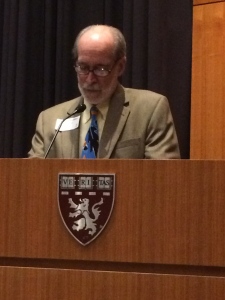
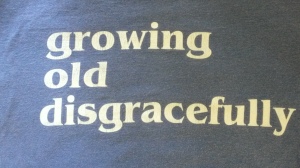
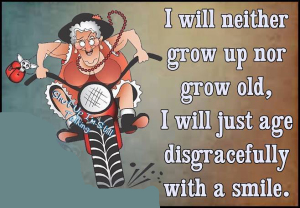
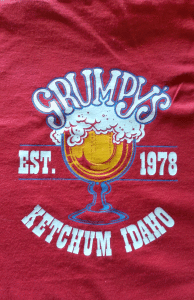
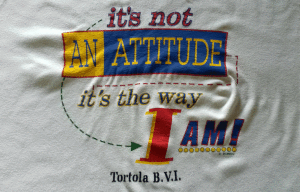

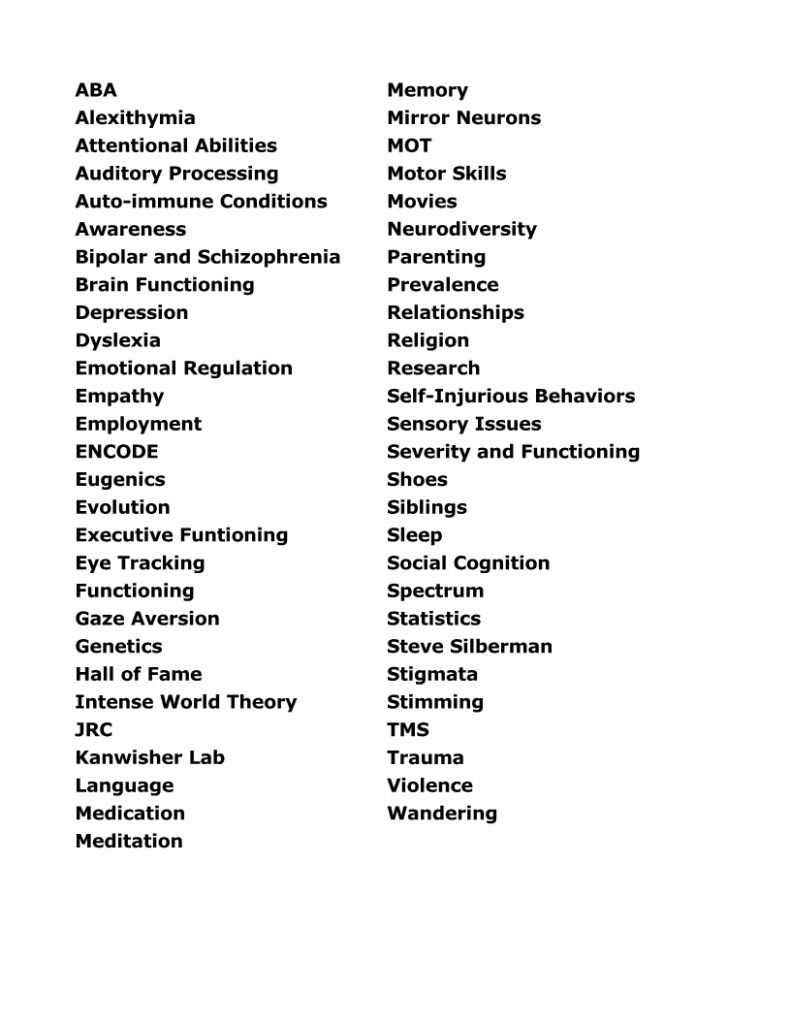

1 pings